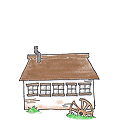
 4
4





 1
1




Get involved -Take away the standing of corporations MovetoAmmend.org
 1
1




The environment is responsible for my participation!
 3
3




"Green University connects the dots from wilderness survival to sustainable living in the modern world."
Green University LLC - Pony, Montana
 2
2




Eva
 1
1
 1
1




 3
3




"Green University connects the dots from wilderness survival to sustainable living in the modern world."
Green University LLC - Pony, Montana

 1
1




"Instead of Pay It Forward I prefer Plant It Forward" ~Howard Story / "God has cared for these trees, saved them from drought, disease, avalanches, and a thousand tempests and floods. But he cannot save them from fools." ~John Muir
My Project Page
 1
1




 1
1




 1
1





 1
1




Michael Newby wrote:
The only reason I don't give the book 10 acorns is really selfishness on my part - I want more! As mentioned above, a pocket friendly field guide would be very handy. Maybe an insert that comes with the book that covered the info presented in part one of the book, which consists mainly of the keys used in pattern recognition as well as general plant part descriptions that you need to understand to be able to use the keys. The other thing that I would really like to see is the addition of more information about uses of the plants. While I enjoyed the information presented about the traditional medicinal and dietary uses of many of the plants, as a permaculture enthusiast (fanatic) it would be great to see things like whether a plant was a known dynamic accumulator or could be used to make foliar sprays, things of that nature.
Works at a residential alternative high school in the Himalayas SECMOL.org . "Back home" is Cape Cod, E Coast USA.
 1
1




Dave's SKIP BB's / Welcome to Permies! / Permaculture Resources / Dave's Boot Adventures & Longview Projects














 1
1




 1
1





|
Yeah, but how did the squirrel get in there? Was it because of the tiny ad?
Permaculture Design Magazine
https://permies.com/wiki/237407/permaculture/Permaculture-Design-Magazine
|









